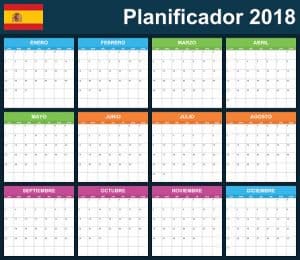Yue Meng and Nile Stanley see the educational value in social networking sites
If you type “Facebook educational usage” into Google, it will show millions of relevant sites in just .278 seconds. With the popularity of Facebook and other social networking sites, such as Twitter and Renren (China), there is an assumption that such sites are useful in classrooms and outside of classrooms. It is not surprising that educators are attempting to integrate social networking sites into both teaching and learning.
Nonetheless, teachers still hesitate to use social networking sites in classrooms, perhaps because of perceived risks of distracting students off topic, or exposing students to inappropriate content. In this article, we discuss both the strengths and issues of using social networking sites in education and offer an example of social network sites can enrich curriculum.
Social networking sites are online websites that provide user-friendly platforms for individuals to connect with others and express themselves. Users of social networking sites are able to share ideas, activities, events, and interests within their individual networks. Facebook, Sophia, and Renren are examples of these free learning communities.
Bartlett-Bragg (2006) defined social networks as a “range of applications that augments group interactions and shared spaces for collaboration, social connections, and aggregates information exchanges in a web-based environment.” Boyd and Ellison (2007) defined social networks as web-based services allowing individuals to construct a public or semi-public profile within a bounded system, articulate a list of other users with whom they share a connection, and traverse their list of connections and those made by others within the system.
Virtual relationships such as these provide individuals with a wide range of information from multiple sources. The popularity of social networks sites has changed students’ online learning into self-initiated learning through which students can learn by interacting with others.
Online usage of social networking sites have become deeply embedded in the lifestyles of many young people. Blattner and Fiori (2009) observed that students’ social life is high tech, while often school life is low tech. Low tech classrooms are teacher-centered while high tech classrooms may be more student-centered and promote constructivist practices in which students have to collaborate.
The author’s study (Meng, 2012) of a student-initiated English as a Second Language learning community based on Renren (the Chinese version of Facebook) suggests social identity, perceived encouragement, and perceived ease of use as the factors that affect the interaction of social networking-based learning community in a positive way.
Specifically, students with recognized social networking identities attempt to use such sites to a greater degree, and may be more able to adapt to an online academic community. Online friends become online classmates.
Students’ efforts in social networking usage are highly dependent on how much encouragement they receive from social networking sites. Ease of use is defined as “the degree to which a person believes that using a particular system would be free of effort” (Davis, 1989).
An important factor influencing adoption of social networking sites is the combination of specific users’ technical skills and their competence in the peculiar features of social networking sites. Davis’s study also suggests social networking sites are related to learning and academic success by creating systems of information, contacts, and support.
Studies show social networking sites support collaborative learning, engage individuals in critical thinking, and enhance communication and writing skills through activating members’ work in personalized environments (Ajjan & Hartshorne, 2008; Lockyer & Patterson, 2008). Benefits for language classrooms include providing constructive educational outcomes, immediate opportunities to interact with peers, instructors, and native speakers of a variety of foreign languages, and developing social pragmatic competence in communication (Blattner & Fiori, 2009).
Social networking certainly promotes collaboration as it provides opportunities for students to join new networks that can open up spaces for collaborative learning. For example, students can work together to complete a project on Facebook. Through email and instant messaging, students are able to interact with other group members, discuss the project, assign working parts and combine individual learning outcomes.
They can easily exchange ideas, share information and work together. The diversity of social networking populations provide students more opportunity to communicate with peoples from all over the world.
Importantly, multimedia learning resources and materials found online can accommodate different learning preferences and needs. With the ability to post videos, photos, and other resources, students can share content easily with others, and give feedback about resources and materials. For example, teachers could upload teaching materials (video, presentation, e-books, photos, or other materials) before class for students to preview. Students are also able to share ideas on materials which may help to promote communication.
The challenges we face while using social networking sites for educational purpose are clear. Most students are used to logging on to social networking sites to communicate on a daily basis. As soon as they log in, they are inundated with information, potentially disrupting their study schedule or even making them forget the initial learning purpose.
Under these circumstances, social networking sites are no longer a learning tool, but a distraction from the right track. Students need to be able to use computers and other technologies with flexibility, creativity, and purpose.
How we address this problem depends on how we teach our digital-age students to properly use technology. Today, students are born in a digitally-infused society. It remains important for them to use technology with a sense of personal and community responsibility.
If schools exclude the technology and teachers do not help students use technology in healthy and smart ways, where can our students acquire virtual community citizenship? Teachers should integrate social networking sites into teaching and learning contexts as a proactive way to start helping students to gain digital citizenship and information literacy. Students need to be able to recognize the learning opportunities and use technologies as part of the process to accomplish learning goals. Social networking sites provide an opportunity for both students and educators to learn to solve problems together in a technological world.
Another challenge teachers face is the need to constantly learn new technology. There is widespread agreement among educators that all students need to be proficient computer users. However, in many schools, teachers and students still use computers only as the equivalent of flash cards and electronic worksheets.
For teachers, the new challenge is not just to be a master of Microsoft Office software or basic word processing. One of the reasons why teachers reject social networking sites is the fear that the unfamiliar technology will cause an uncontrolled situation in the classroom. If the productive side of technology use is neglected in the general curriculum, how can educators help students to acquire the necessary skills to survive in our society? Even when students acquire isolated skills and tools, they may lack an understanding of how to use those various skills together to complete tasks and eventually solve real life problems.
Moving from teaching isolated technological skills to an integrated approach to social networking takes a great deal of planning and effort. This is the biggest hurdle preventing us from using new technology, because social networking sites are largely user-friendly and easy to operate. Educators can easily be proficient with some effort. Roach and Beck (2012) comment that social networks offer educators a powerful tool for developing the new literacies.
They point out how the National Council of Teachers of English, NCTE (2008) suggests that 21st century readers and writers must develop proficiency with technology; solve problems collaboratively and cross-culturally; manage multiple streams of information; design and share information for global communities; and attend to the ethical responsibilities required by these complex environments (p. 253).
Social Networking Integrated into a Classroom Setting
Ms. Li is a high school history teacher. At the beginning of one semester, she created a Facebook history page for her class. She found Facebook highly useful in the following: (1) planning the class; (2) increasing student involvement; (3) implementing differentiated instruction; (4) communicating with parents; and (5) improving language development.
As a new teacher who did not have previous lessons and little experience to build upon, Li used networking to make her lesson planning more effective and efficient. First, it provided access to resources for both Li and her students. Before each class, she would publish resources on the class history page that she created for her students. The resources included electronic textbooks, historical documentary videos, historical pictures, and some links to relevant history websites.
Compared with traditional textbooks, the multimedia resources were found to be more interesting. Since students used Facebook on a daily basis, there were many chances for them to access the class history page. Second, networking assisted her in monitoring and recording student feedback and helped her make lesson plan changes. For example, before class, Li posted the objectives and background knowledge for students to make sure they were ready for new higher-level lessons.
If students found out they lacked the pre-knowledge for class, they could reply instantly. Then, she sent or posted extra resources for students or changed the class plan to a more appropriate level. Third, it saved time because it was easy to use the storage and retrieval capabilities to modify and reuse previous class plans. What was more exciting was that she did not need to save those previous documents and lesson plans herself. Facebook saved them automatically as long as she did not delete them on purpose. Therefore, there was no need to worry if her computer crashed.
Social networks increase student involvement. Effective teachers know the best way to teach is to involve as many students as possible. Facebook can help achieve this goal since some students feel more comfortable in sharing opinions online than in traditional classes. For each class, Li would prepare several questions for students to discuss. She would post early on the history page, so that students knew what they would discuss in class.
In order to encourage students’ responses, she graded the responses for credits. This not only encouraged the active involvement of each student, but also provided her with feedback about the whole class’s learning progress. In addition to information about individual student’s answers, Facebook also provided opportunities for group discussion. Li found that students were more motivated and attentive, and the feedback from all students provided invaluable information about their progress.
Facebook can help with differentiating instruction by providing alternate instructional resources. Li posted different kinds of resources for her students to choose from so they could choose their favorite learning resources. For struggling students, Li provided more primary level resources to help them to better understand the class content. It was also valuable in providing practice and reinforcement for students who needed extra help.
For example, by viewing students’ responses online, Li could identify students who were still struggling with content. She could then help those individual students with different assignments and other adjustments. Also, learning was social and more capable students assisted less capable students, particularly in language development. Vygotsky’s “zone of proximal development” could be advanced through the use of technology (De Costa, Clifton, & Roen, 2010). Students as online mentors can even earn community service hours.
Social networks offer tools to communicate with parents beyond e-mail, as parents are able to view class content and even class discussion as long as they are “friends” of the page. It not only encourages parental involvement in the process, but also makes home-school links more effective. Students and parents are now able to monitor missing assignments and current grades, which increases the opportunities for success.
In conclusion, social networks are a valuable 21st century literacy tool to use for educational purposes. Not only because they help promote authentic communication, practical social language development, and constructivist learning, but because they shift power to our students. Because of social networking sites, students’ voices have been heard, and their opinions have been valued.
Skeptics may dismiss Facebook and social networks as frivolous, and some educators may fear lecturing less and students learning more by themselves. We believe, as our learned society’s advocate, that educators should prepare our students for responsible digital citizenship and consider carefully the opportunities and challenges of emerging technologies, and the new literacies. Research into the impact of social networks for learning and how to integrate Facebook thoughtfully into the language curriculum are needed.
References
Ajjan, H., & Hartshorne, R. (2008). “Investigating faculty decisions to adopt Web 2.0 technologies: Theory and empirical tests.” The Internet and Higher Education, 11(2), 71-80.
Bartlett-Bragg, A. (2006). “Reflections on pedagogy: reframing practice to foster informal learning with social software.”
Retrieved on April 14, 2012 from http://www.dream.sdu.dk/uploads/files/Anne%20Bartlett-Bragg.pdf.
Blattner, G., & Fiori, M. (2009). “Facebook in the language classroom: Promises and Possibilities.” International Journal of Instructional Technology and Distance Learning, 6 (1). Retrieved on April 14, 2012 from http://www.itdl.org/journal/jan_09/article02.htm.
Boyd, M. D., & Ellison, N. B. (2007). “Social network sites: definition, history, and scholarship.” Journal of Computer-Mediated Communication, 13(1), 210-230.
Davis, F. D. (1989). “Perceived usefulness, perceived ease of use, and user acceptance of information technology.” MIS Quarterly, 13(3), 319-339.
DeCosta, M, Clifton, J., & Roen, D. (2010). “Collaboration and social interaction in English Classroom.” English Journal, 99 (5) 14-21.
Lockyer, L., & Patterson, J. (2008). “Integrating social networking technologies in education: A case study of a formal learning environment.” In Proceedings of 8th IEEE International conference on advanced learning technologies (pp. 529-533). Spain: Santander.
Meng Y. (2012). “An Empirical Study of the Factors Affecting SNS-based Network Learning Community Interaction.” Unpublished Master’s Thesis, Shaaxi Normal University, Xi’an, China.
Roach, A. K., & Beck, J. J. (2012). “Before coffee, Facebook: New literacy learning for 21st Century teachers.” Language Arts, 89 (4), 244-255.
Yue Meng is a graduate student majoring in Educational Technology at the University of North Florida for in an exchange program with Shaanxi Normal University, Xi’an, and China. She can be reached at [email protected].
Dr. Nile Stanley is a visiting scholar, Shaanxi Normal University, Xi’an, China through exchange with the University of North Florida. He can be reached at [email protected].
 According to a poll recently released by the British Council, one out of every five UK adults (about 13 million people) said they plan to learn another language as a New Year’s resolution, while one in three (over 20 million Brits) intends to try and learn at least some phrases in another language in the year ahead.
According to a poll recently released by the British Council, one out of every five UK adults (about 13 million people) said they plan to learn another language as a New Year’s resolution, while one in three (over 20 million Brits) intends to try and learn at least some phrases in another language in the year ahead.



 It’s long been known that babies modify their sounds to become more speech-like in response to feedback from their caregivers, and that they learn things have names by caregivers naming objects. But a news study, published in
It’s long been known that babies modify their sounds to become more speech-like in response to feedback from their caregivers, and that they learn things have names by caregivers naming objects. But a news study, published in 



 In a study published in Psychological Science, the journal of the Association for Psychological Science, Pascale Engel de Abreu of the University of Luxembourg and her colleagues examine the effects of bilingualism on the executive functioning of low income
In a study published in Psychological Science, the journal of the Association for Psychological Science, Pascale Engel de Abreu of the University of Luxembourg and her colleagues examine the effects of bilingualism on the executive functioning of low income A study recently published in
A study recently published in 
 Simona Montanari
Simona Montanari
 Jenny Muñiz summarizes the latest recommendations
Jenny Muñiz summarizes the latest recommendations Iran has announced that English would no longer be taught in primary schools after Islamic leaders warned that early exposure to English would help facilitate a “cultural invasion.” Iran’s Supreme Leader, Ayatollah Ali Khamenei, has previously expressed concern over speaking English.
Iran has announced that English would no longer be taught in primary schools after Islamic leaders warned that early exposure to English would help facilitate a “cultural invasion.” Iran’s Supreme Leader, Ayatollah Ali Khamenei, has previously expressed concern over speaking English.
 The whistled “bird language” used by small groups of Black Sea villagers in remote northern Turkey has joined a UNESCO list of endangered languages in need of “urgent safeguarding.”
The whistled “bird language” used by small groups of Black Sea villagers in remote northern Turkey has joined a UNESCO list of endangered languages in need of “urgent safeguarding.”